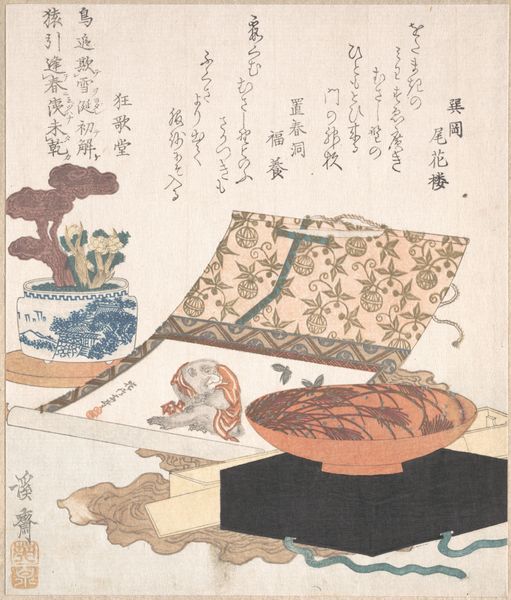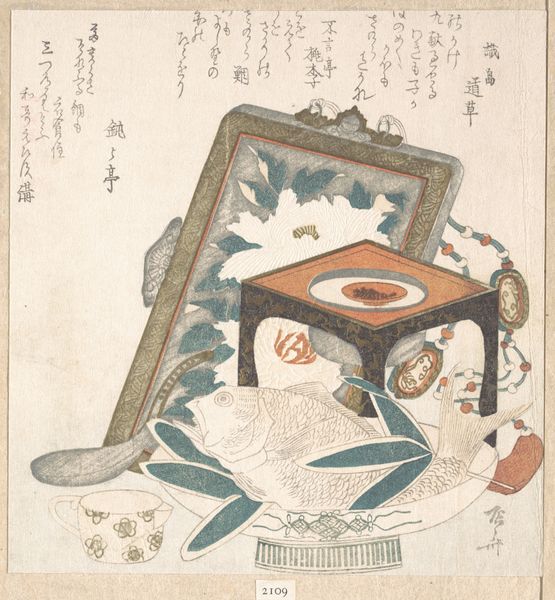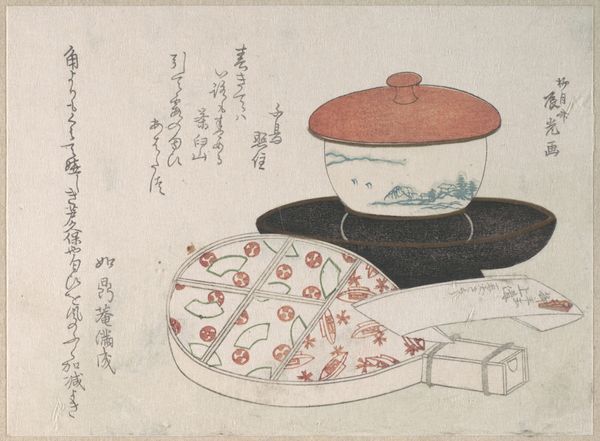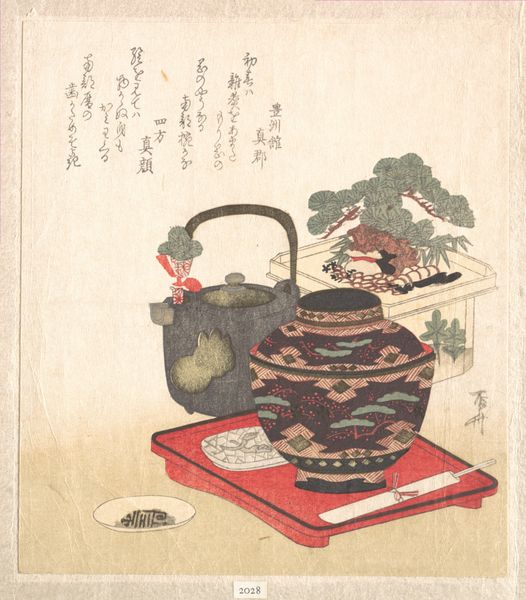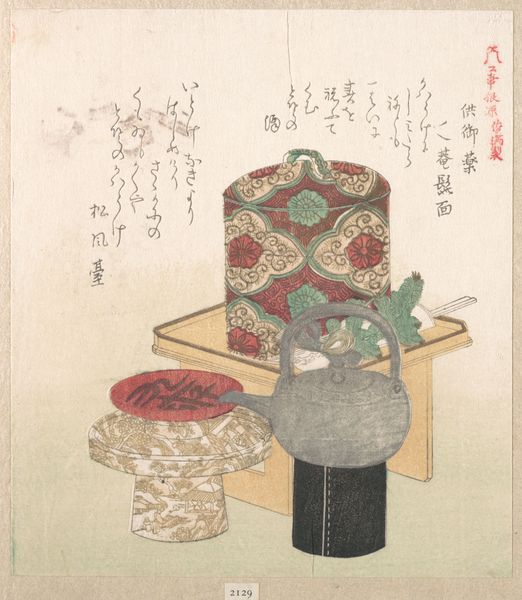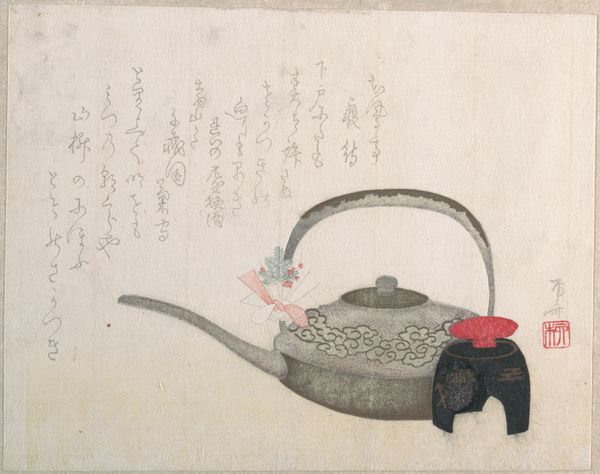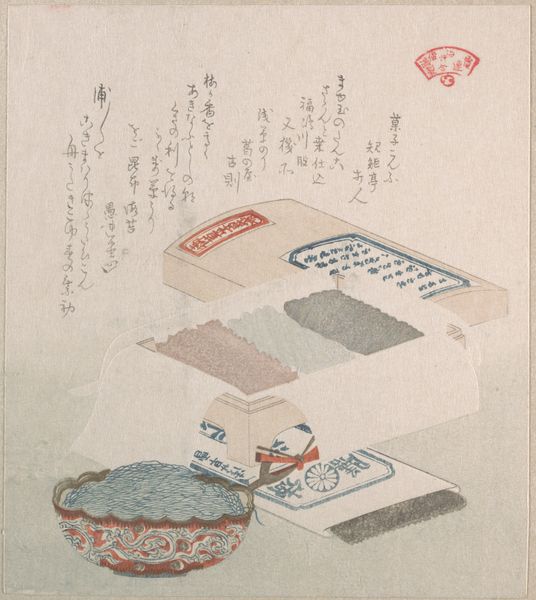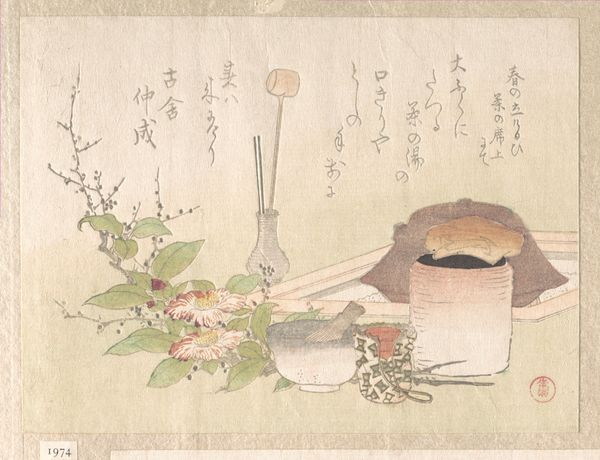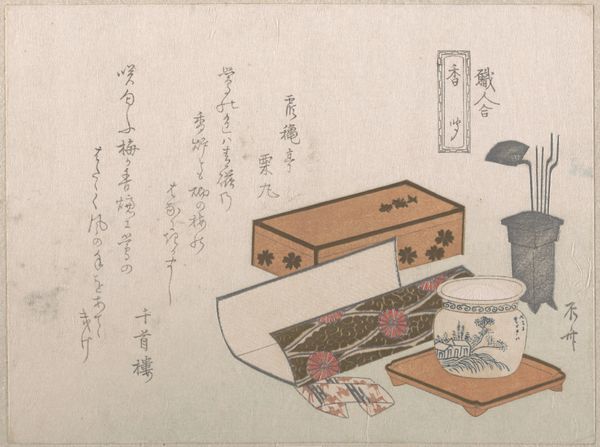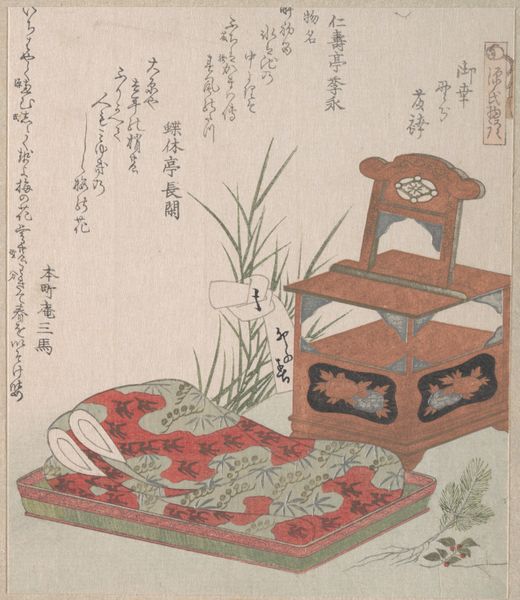
print, watercolor, woodblock-print
#
water colours
# print
#
asian-art
#
ukiyo-e
#
watercolor
#
woodblock-print
Dimensions: 5 5/8 x 7 7/16 in. (14.3 x 18.9 cm)
Copyright: Public Domain
Curator: Before us we have "Utensils for Tea and a Cake-Bowl," a 19th-century print by Kikugawa Eizan. Editor: My initial impression is of serene domesticity. It’s simple, uncluttered. The textures of the glazed pottery and the slight asymmetry lend it a warm, human touch. Curator: It’s precisely this blend of the quotidian with aesthetic principles that makes this ukiyo-e print significant. These "pictures of the floating world," as they’re known, capture transient beauty, reflecting social and cultural values during the Edo period. Consider the stark contrast of textures – the roughness of the teapot, versus the smooth lacquer of the trays, indicating social stratification, access to goods and the nuances of a ritual. Editor: You’ve pointed out a keen detail in materiality. To me, the objects resonate symbolically. The teapot could represent hospitality, while the sweets embody prosperity or celebration, but without the cultural context, I don't want to apply Western meaning to Japanese traditions. Curator: Absolutely. By visually cataloging objects integral to these settings, we are invited to engage with not only the aesthetics, but the social performances that accompany their function. Consumption itself can be a culturally charged topic. Look at who might have had access to such wares; how does their service impact gender dynamics or labor inequities present at the time of this print’s conception? Editor: That is astute. There is an emphasis on design, reflecting a particular worldview expressed via symbols of objects. Thinking of this as a sort of script of social interaction adds a dimension, where this could document both cultural memory and a prescribed way of engaging. Curator: And that's why this piece intrigues; its elegant portrayal carries layered socio-political implications—from cultural exchange to hierarchical structure within this single image. Editor: The detail certainly belies initial simplicity, leading to a far deeper insight into lives embedded in the Japanese class structure. I appreciate how everyday items bear profound significance and social critique.
Comments
No comments
Be the first to comment and join the conversation on the ultimate creative platform.
